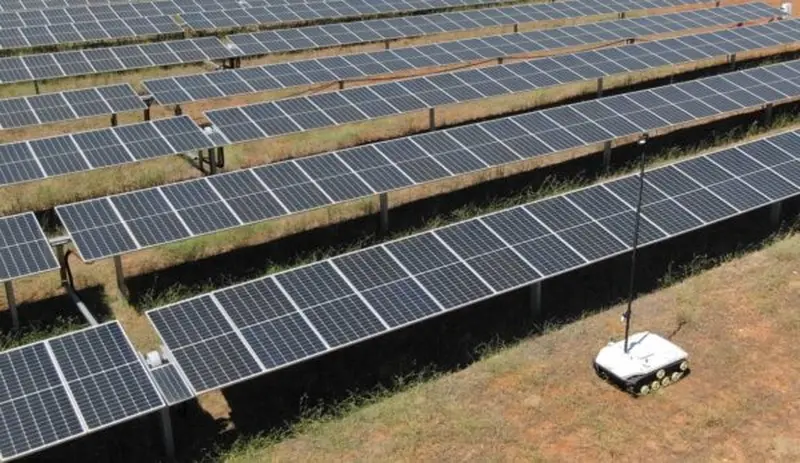With an autonomy that exceeds 30 hours, the Antecursor II is a photovoltaic plant inspection robot that searches for thermal anomalies in the upper part of the panels and simultaneously in all their lower structures, in addition to clearing the land.
Arbórea Intellbird presented the Antecursor II, an autonomous inspection robot for large infrastructures that runs completely on renewable electrical energy . According to the company, it is the first civil robot capable of operating autonomously anywhere in the world thanks to the satellite coverage of the Starlink network.
Currently, it is in operation in photovoltaic plants in Spain. The robot is built with aerospace alloys, weighs 285 kg and uses company patents. A set of high-resolution thermographic sensors collects thousands of measurements per second and this data is evaluated using an artificial intelligence process patented by Arbórea, based on a combination of hardware and software developed by the Salamanca company.

According to the company’s explanation, the Antecursor II moves automatically with centimeter precision thanks to a process patented by Arbórea inspired by the hunting strategies of the genet, a nocturnal predator capable of moving precisely in the dark.
Antecursor II photovoltaic plant inspection robot
Supported by the Starlink satellite network, the communications system allows Arbórea to monitor in real time the entire fleet of robots deployed in remote photovoltaic plants through its patented tool, the “Virtual Control Tower”. This platform automatically receives real-time information about the status of each robot’s systems, as well as alerts related to detected anomalies.
It is important to note that the robot has two main functions: the autonomous surveillance of the photovoltaic infrastructure, searching for thermal anomalies not only in the upper part of the panels, as drones do, but also simultaneously in all their lower structures, such as clips, fuse holders, staples or wiring, that escape sight air and are prone to generating risk hot spots.

Likewise, the system identifies and evaluates anomalies according to plant conditions, providing early detection of possible failures in real time. As a result, technicians from the company that owns the park receive alerts on their mobile phones with information about the anomaly , its location and a thermography with reference values. This allows early intervention to avoid fire risks. In addition, the robot has an integrated vegetation clearing system made of aeronautical materials to generate fine shredding of the vegetation or “mulching”.
Don’t miss any of our posts and follow us on social media!
Inspenet.com YouTube LinkedIn Facebook Instagram
Source and photos: pv-magazine.es
Video: University of Salamanca

